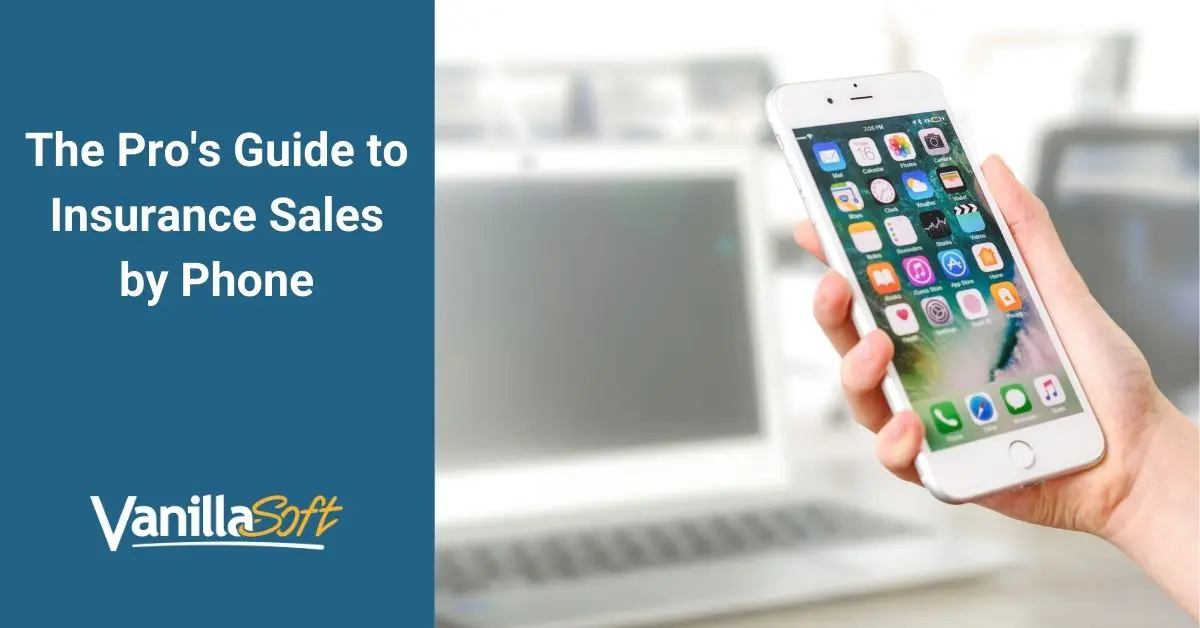
So, you are an insurance salesperson who relies on sales by phone. You know we live in a fast-paced world that is all about convenience. You can binge watch a whole season of a favorite television show in a single weekend. You can order food online and get it at your home in less than an hour. It’s not surprising that we sometimes let that demand for convenience seep into our professional lives. As you dial through your insurance leads, for example, do you find yourself smiling and dialing as fast as you can? Are you conditioned to believe that faster is always better? Instead of treating your leads like a “to do” list you have to plow through, think of them as opportunities you can build up. Remember that quality can be as important as quantity!
In the spirit of “building up” opportunities, here is a list of ten tips to help you make better insurance sales calls.
- Be knowledgeable. If you are new or there have been changes to the plans you sell, you need to do your homework. Learn everything you need to know to be an authority on your product. People are entrusting you with something very valuable to them: their future. Treat that as the big responsibility it is.
- Promptly contact leads. If you received a request for a quote via your website or an email, don’t delay in making the call. Give this lead priority. A queue-based lead management solution will help ensure web leads are captured and routed in seconds so that a sales representative follows up immediately.
- Set the right tone. Start every call on a positive note. Don’t discuss bad weather. Don’t mention the lousy traffic. Avoid bad-mouthing the competition too. According to Vanessa Van Edwards from Science of People, bad-mouthing your competition can have a boomerang effect. It’s called spontaneous trait transference. The basic gist is this: studies show that communicators are perceived as possessing the very traits they describe in others. So, keep your call positive. Stay upbeat and on message. A sales call platform with logical branch scripting can help you stay on message and overcome objections with positive comebacks.
- Differentiate yourself. In point three, I mention using a script. However, that doesn’t mean reading a script. When you call that next lead, the recipient shouldn’t feel like this is the 5 millionth time you’ve repeated your spiel today. Make each call sound fresh — stand out from the sea of telemarketers and call center agents who are trying to reach those same prospects. Personalize your greeting. Work hard to make a connection instead of performing a recitation.
- Pay attention. It’s so easy to get distracted, isn’t it? Email notifications, instant messages, thinking about what you are going to say next. There are so many things that can trip you up if you let them. Before you make your next call, get focused. Be ready to listen. Close your email program. Use the mute button so that you force yourself to listen to the customer before you begin speaking. Everything you need to know about the prospect is waiting to be uncovered if you just ask the right questions and pay attention to the answers.
- Leave great voicemails. As Craig Rector pointed out in The Top Performer’s Voicemail Playbook, voicemail is essentially a stripped-down form of public speaking. If you are giving a speech, you don’t approach it with a lifeless, monotone voice or sloppy-speedy delivery, do you? Of course not! Make each voicemail a strong call to action to get back with you — or at least take your next call.
- Follow up consistently. There is rarely such a thing as a “one and done” sales call. The majority of leads require at least 8 attempts before an initial connection and 5 attempts for a follow up. However, many sales reps give up after one follow up attempt. A queue-based lead management solution can help you stay on target with 8 – 9 initial attempts and 6 – 8 follow-up attempts. (source: The Technology-to-Performance Chain: How Lead Management Systems Drive Inside Sales Performance)
- Find efficiencies to boost productivity. To make your calling more effortless and less time-intensive, select a sales enablement solution that leverages features such as progressive or preview auto dialing, voice drop pre-recorded voicemails, and automatic lead routing. This can take you far above the industry average of 8 calls/hour to over 20 calls per hour!
- Know when not to call. If you have a prospect who isn’t quite ready to buy, continually calling to push the conversation probably won’t help. However, an educational or informative lead nurturing campaign may do the trick. Lead nurturing is an important part of building a relationship that can turn into a sale. Select sales enablement technology that can help nurture leads through email drip campaigns. Gently move the “not ready to buy” people through the sales funnel by sending targeted, relevant email drip campaigns. This can keep you top of mind when they are ready to make a purchase.
- Stay in touch with current customers. As you already know, it costs less to keep a customer than win a new one. Use email outreach and social “helping” to keep your current customers up to date with the latest news or conditions that could impact their policies. Follow up these friendly touches with a phone call. That phone call can be a great opportunity for a cross sell, upsell, or renewal.
Conclusion
Are you ready to build relationships instead of plow through sales calls? Remember that each lead on your list is a potential opportunity instead of a to-do. Your mental approach plus the right technology can mean the difference between an average year in insurance sales and your best year yet!


